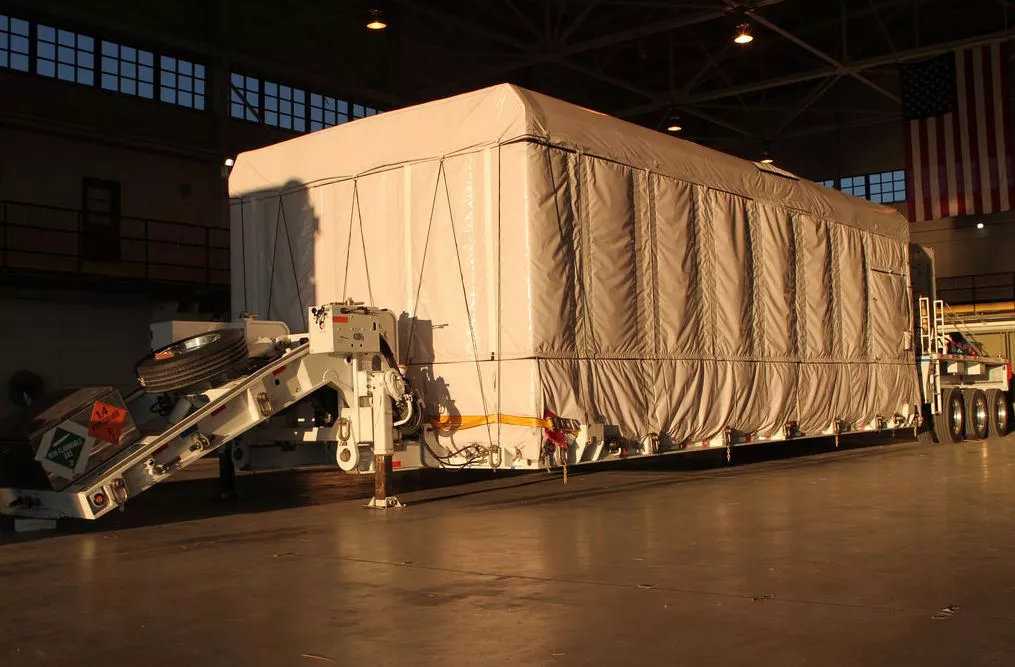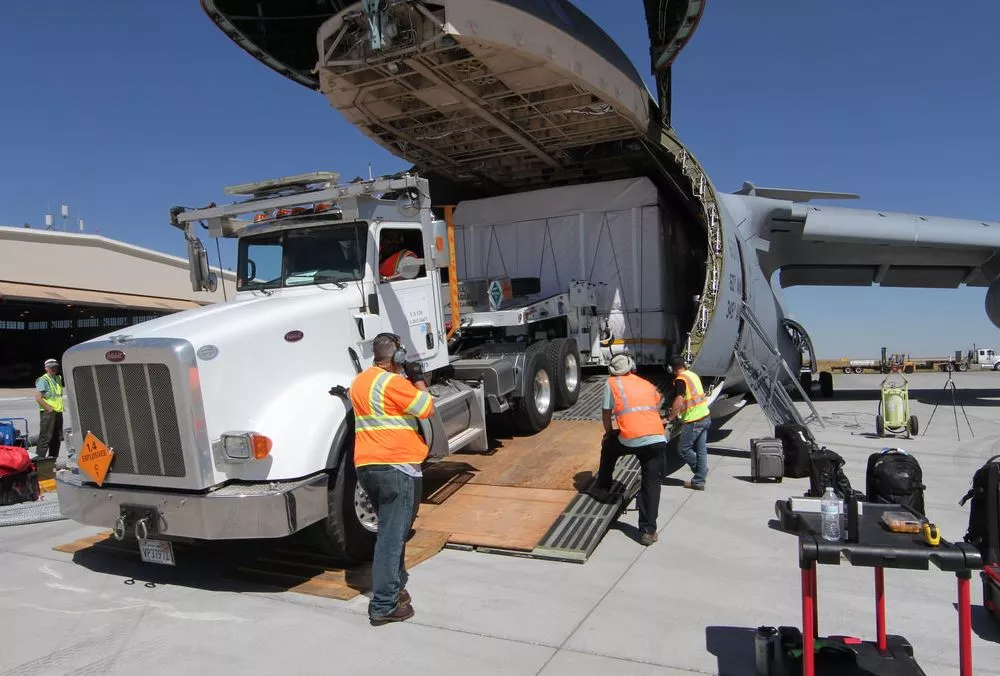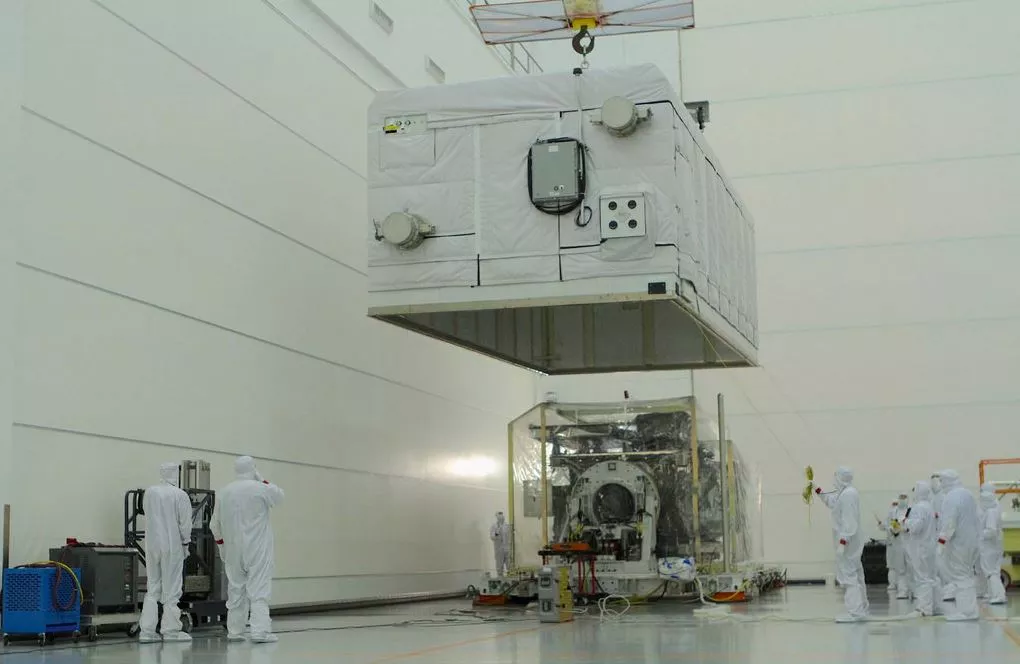“Shipping” a satellite calls for something more than a large box and a whole bunch of bubble wrap.

Can you believe there is a satellite in there? GOES-R is all packed up and ready to go on August 22, 2016. Next step: Boarding a U.S. Air Force C-5.
“Shipping” a satellite calls for something more than a large box and a whole bunch of bubble wrap.
Take the case if GOES-16. Before launching into orbit on November 19, 2016, GOES-16 had to be shipped from where it was constructed in Littleton, Colorado, to Kennedy Space Center in Cape Canaveral Florida. Measuring more than 18-feet wide and weighing over 6,000 pounds, GOES-16 needed a special satellite shipping container and a massive C-5 airplane to get it there.
To find out just what makes this shipping container so special (you know, besides having a multibillion dollar satellite inside it), we checked in with Charles May of NASA’s Goddard Space Flight Center to learn what’s involved in shipping a satellite across the country.

GOES-16 gets loaded on to a C-5 cargo plane in preparation for shipment to Kennedy Space Center.
According to Charles May of the GOES-R Project Office at NASA’s Goddard Space Flight Center, the first step in the process is to place protective covers over the instrument optical apertures and other sensitive satellite surfaces.
“Prior to shipping, all of the deployable appendages, including the antenna wing, X-band antenna, magnetometer boom, earth pointing platform, solar wing and solar instrument platform, etc., are stowed against the body of the satellite,” he said. “Then protective covers or wrappings are put around the instruments and radiators. In addition, the instruments are ‘purged’ (meaning they have gaseous nitrogen pumped into them during transportation), to keep contamination out of their internal, sensitive areas.”
For shipping, the satellite is placed on a mobile pallet. The pallet is equipped with a protective tent that surrounds, but does not touch, the spacecraft.
“Next the satellite is placed in a shipping container composed of a large base with a removable lid. To the base of the container, technicians and engineers install several structures: posts in all four corners, 2 frames that provide extra protection on two sides, and a top frame installed on those posts that also has cables strung across it,” said May. “The base of the container has a layer of plastic bagging on the floor, and a five-sided bag is lowered down over the posts and top frame. The bag and bottom layer are then sealed with clamps and tape to provide a completely sealed environment.”

GOES-16 is uncovered in a clean room at Astrotech Space Operations in Titusville, Florida, after being delivered on August 22, 2016 from Colorado.
Finally, the interior of the shipping container is monitored for temperature and humidity. If necessary, the container has an Environmental Control System to maintain the desired environment, especially for long trips to the launch base. Engineers also monitor the amount of shock the satellite encounters during shipment (from bumps in the road, etc.).
But wait, there’s more!
Once the satellite reaches its destination, it’s (gently) transferred to a clean room for storage until launch day arrives. While in storage, technicians work to free the satellite from its container, uncover and unwrap the instruments, and then inspect the satellite to make sure no damage occurred during shipping.
